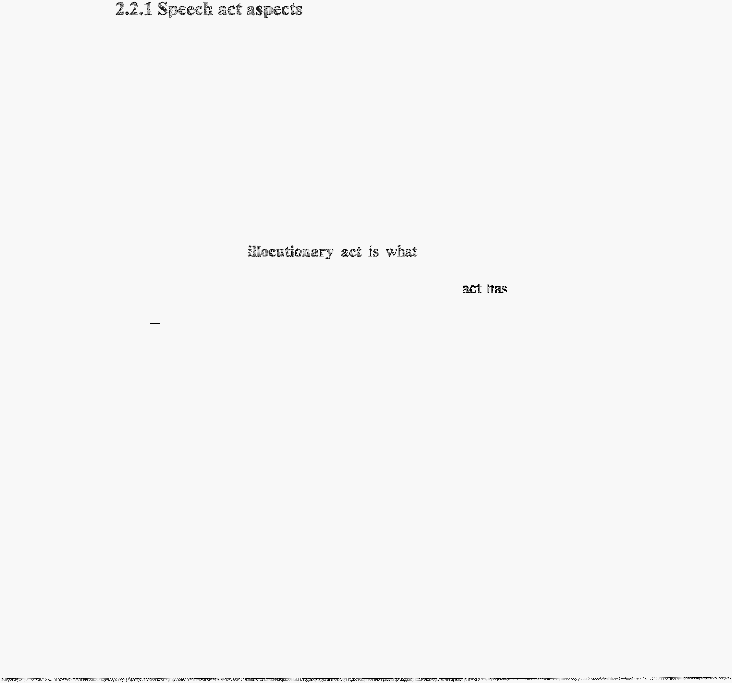
stail:m:euts. These utterances are intended to
'""'•ll" things
happen". Austin sujsges'..ed
tha::
it
is not
truth of these utterances that
we
should
ask, but w:hetller
work or
not
accomplishing
f:>urpose - in Austin's
tern1,
whether they are felicitous or not
\i\.Jrek)ler 2000:
181). Kreidler
says:
An uttermce has a purpose.
to
achieve
that Plh'POse
to be
appropriate
to
purpose - several oondilio:1s are rrecess!l.)': the content of the utrermce
mll>"'t
ap-rcpriate, the sociel
sitwltion in
which
it occrn:s must be appropriare,
spe'"ake!
must
be sincere
in what
he says, and hearer(s) accept the utterance
as ha.ving that
purpose.(2000: 183)
It has been
introduced
Austin that
we can perform act through ianguage which
he
labeled
as
speech act.
distinguished
different
aspects
(or forces) of speech
First, the lm:uooury act,
or what
Searle
referred
as
utterance act,
is simply the act
when
we utter something. n <Sun (1962
Cn:se,
2000:33
explained
as follows:
Tne uttel'imee of certain noises...certain words
in a
consiJ:udiora!i!d the
lltterl!;lce of
fuem
with a
sell.Se and a ce1-:ain refec-eace.
Second,
speaker's
communicative inteniion.
(2000:
332}
argued
that when
the locutionary
been
perforffied so
has
other words, tlwse acts are working simultaneously. The int."'ltion
the
addressee
grasps
or
understands is called
pedocutiQn
n·y
act
(Kreidler,
2002:!81).
Levinson
(1983:236
as
mentioned
i.'1
Mey,
1994:
113)
added
the notion
of
perlocutkmary act
which
deals
vvi.th
the
effects
the
utterance
toward the
addressee.
Lyons says:
Vihen
we comc:llmicare some propositioo.
to another
persoo, we do so, ncr.:mally because
we wish to in some way
beliefs, attitudes or behavior (1979:725)